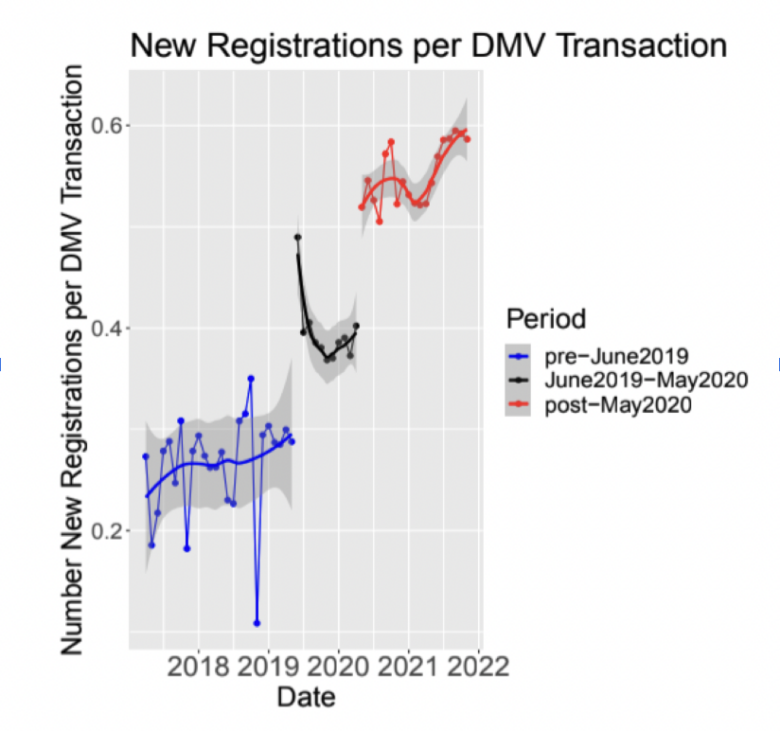IRG Analysis of study | Changing the Default: The Impact of Motor-Voter Reform in Colorado
Starting in 2018, Colorado reformed the automatic voter registration process at its Department of Motor Vehicles to increase efficiency and voter participation.
Before 2018, DMV customers were gently encouraged to register to vote or update their registration when conducting a driver license transaction. Customers could opt-out of voter registration or updating during the DMV transaction.
The reforms adopted since 2018 have streamlined the system by making registering to vote and updating voter registration the clear default option for DMV customers.
- Automatic Updates: DMV customers who were already registered to vote had their voter registration addresses automatically updated.
- Streamlined Registration: Certain DMV customers who were not registered to vote and who presented documents establishing their eligibility as part of the DMV transaction were automatically registered to vote (and given an opportunity to decline voter registration by mail).
- Customized Prompts: Remaining unregistered DMV customers were more clearly informed of their unregistered status when prompted to register at the DMV.
A recent study by award-winning Stanford University political scientists Jonathan Rodden and Justin Grimmer uses established statistical techniques to demonstrate the dramatic positive impact of these reforms for voters and election officials.
Registering More New Voters
These reforms roughly doubled the rate at which unregistered DMV customers registered to vote, as compared to the prior automatic voter registration system.
- For every 100 unregistered DMV customers, the reforms caused an additional 29 to 38 customers to become registered.
- The effectiveness of these reforms has increased as the pandemic has subsided and DMV traffic has returned to semi-normal levels.
The impact was even larger for young people pre-registering to vote, more than doubling their registration rate.
- For every 100 unregistered DMV customers between 16 and 18 years old, the reforms caused an additional 29 to 48 customers to become pre-registered.
Updating Registrations for Hundreds of Thousands More Voters
- The study showed that before the reforms, of the DMV customers already registered to vote who declined a registration update, about 1/3 actually had an out-of-date voter registration record that needed an update.
- The reforms caused an additional 200,000 registered voters to have their out-of-date addresses automatically updated each year. (For comparison, Colorado’s population is 5.7 million people)
Impact of Colorado Reforms on New Voter Registration
This graphic shows the dramatic increase in registration rates that occurred on exactly the dates that the reforms were implemented.
- The difference between the blue line and red line shows the full impact of the reforms on the registration rate for unregistered DMV customers.
Because Colorado implemented parts of the reforms at different times, the graphic has three parts, showing the voter registration rate for unregistered DMV customers.
- Blue Line: Registration rate for unregistered DMV customers prior to reforms.
- Black Line: Registration rate for unregistered DMV customers after DMV began more clearly informing unregistered customers of their unregistered status.
- Red Line: Registration rate after certain unregistered DMV customers with confirmed eligibility began to be automatically registered to vote.
